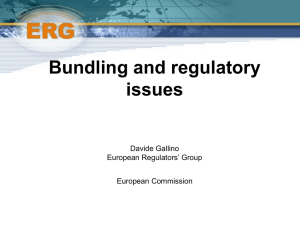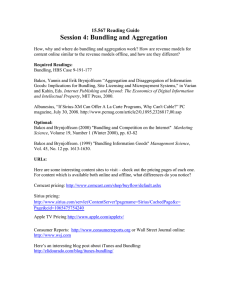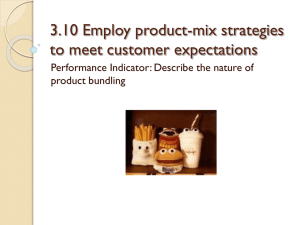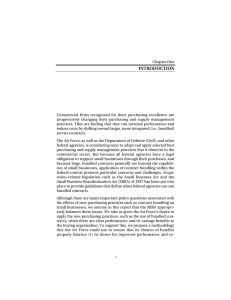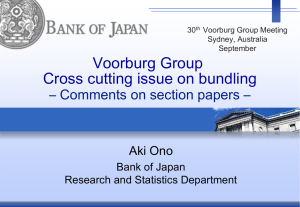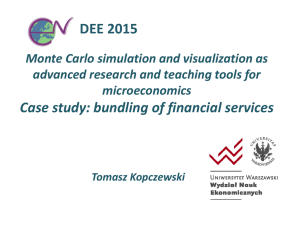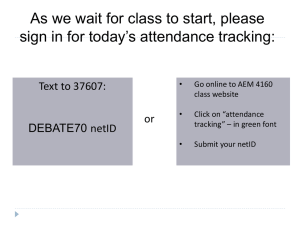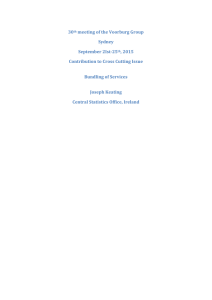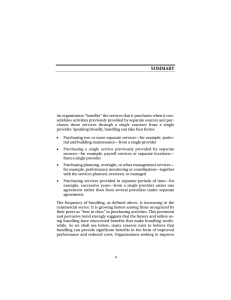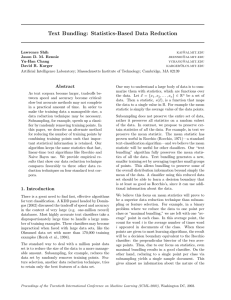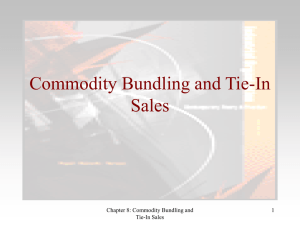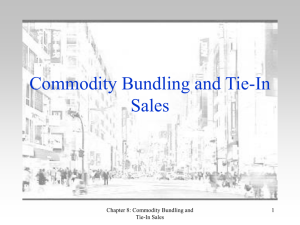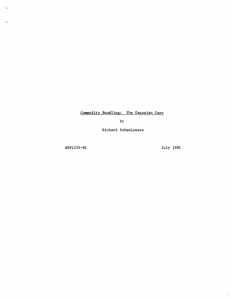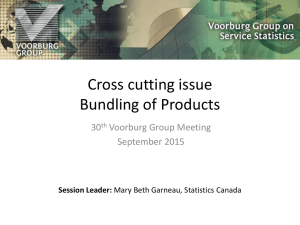Pricing Strategies and Competition Law
advertisement
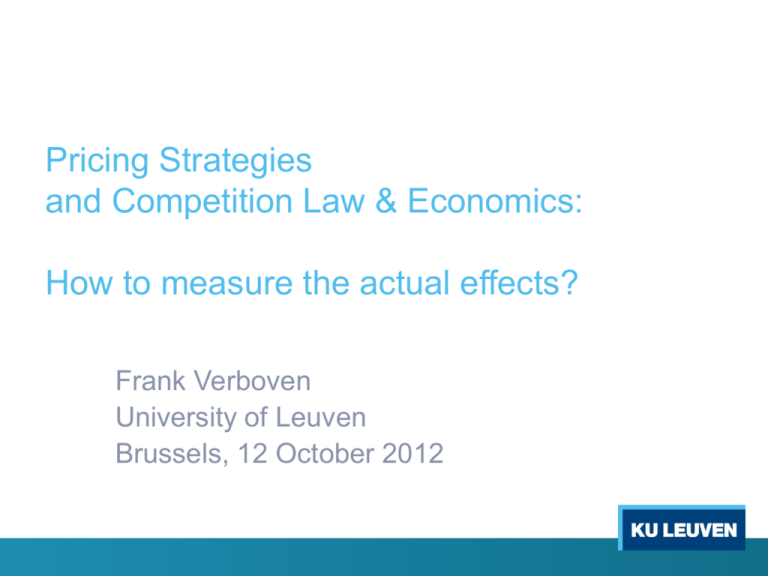
Pricing Strategies and Competition Law & Economics: How to measure the actual effects? Frank Verboven University of Leuven Brussels, 12 October 2012 Empirical evidence: some relevant questions 1. 2. Is the definition of the anti-competitive practice satisfied? • Requires sensible definition, caution under effects-based approach! • May involve implementation issues How are consumers affected by the practice? • 3. Does the firm have a profit incentive to engage in the practice? • 4. Contributes to provide/rebut a theory of harm Are there efficiencies to justify the practice? • 5. Contributes to provide/rebut theory of harm Provides justification / may counterbalance harm Are competitors hurt by the practice? • Caution: may be counterproductive in identifying anti-competitive practice • More relevant in calculating damages Empirical evidence: a variety of methods • Measurement of costs o Excessive pricing, margin squeeze, rebates, … • Yardstick/benchmarking approach o Margin squeeze, … • Before/after approach (and “difference in difference”) o Tying, … • Structural approach: estimating demand substitution o Exclusive distribution, bundling, … Excessive pricing • There are many suggested methododologies See e.g. OECD (2011) o o o Profitability analysis Price – cost comparisons Price comparisons • But: there is no clear definition of the practice in the first place! See again e.g. OECD (2011) One obvious (?) definition: “excessive price is the monopoly price” o How define a monopoly? o How account for price elasticity of demand? o Convict any firm that maximizes profits? Margin squeeze • Common definition (if still controversial…) retail price – wholesale price < cost But: implementation issues, i.e. measuring cost (e.g. Telefonica case) o o Cost of “equally efficient competitor” = incumbent’s cost Long-run average incremental costs • Yardstick/benchmarking approach to measure consumer effects Compare performance in countries with and without price squeeze o Control for other reasons for performance differences between countries Examples: mobile telecom or broadband penetration o • Yardstick/benchmarking approach to measure competitor profit effects o o Caution to use it to demonstrate anti-competitive effects Potentially more useful in damages assessment (if correctly used) Rebates • Example of Intel vs. AMD o Rebates for X86 CPUs to OEMs (Dell, HP) in return for buying mainly from Intel • European Commission: o o o o Efficient competitor test, a price-cost test as in margin squeeze “AMD foreclosed from market” Implementation of test controversial, but important advance over previous cases Need evidence of theory of harm that Intel weakened AMD Vertical restraints, in general Slade and Lafontaine (2008) • Review of empirical evidence on exclusive dealing, exclusive territories, tying, bundling, RPM • Variety of approaches: regression, natural experiment, event study (stock prices), structural • Empirical evidence from academic studies is still scarce (as opposed to mergers, cartels) • Their main conclusion o o Voluntary vertical restraints often benefit consumers (prices, consumption) Government-mandated vertical restraints hurt consumers Vertical restraints, in general Cooper, Froeb, O’ Brien, Vita (2005) • Little support for proposition that vertical restraints harm consumers • Evidence that vertical restraints may benefit consumers: elimination of double markups and cost savings • Evidence that vertical restraints may increase demand Price discrimination and trade restrictions Brenkers and Verboven (2006) • Selective or exclusive distribution prevents companies to sell to foreign consumers o E.g. cars, pharmaceuticals o This restriction to parallel trade enables price discrimination • Structural approach: estimating demand substitution o o Effects on consumers ambiguous: some countries gain, others loose Profit incentives are weak: firms probably have other motive for selective and exclusive distribution Bundling Chevalier and Scott Morton (2008) • Funeral services: funeral homes have licensed monopoly • Funeral goods (caskets): funeral homes may have monopoly o Some states: always bundling o Other states: never bundling o Other states: restriction removed • Before/after method (difference in difference) service good (=casket) both No bundle 1450 700 2150 Bundle 1250 950 2200 Difference -200 +250 +50 • Evidence for Chicago one-monopoly-profit argument: bundling raises price of good by 250$, but lowers price of service by 200$ Reducing rival interoperability Genakos, Kuhn, van Reenen (2011) • Microsoft case: one-monopoly profit argument may not hold o o Consumers with high price sensitivity for PCs may have low willingness to pay for servers Bundling may be used as price discrimination device • Bundling through reduced interoperability implies o o Gains in the server market Reduced sales in the PC market • Structural approach: estimating demand substitution o Policy test quantifies positive profit incentives for bundling Relative margin effect > relative output effect Some concluding remarks • Many seemingly anti-competitive pricing practices o o benefit consumers, and if not, they are often government-mandated • Variety of empirical methods is available to assess the validity of a theory of harm • Finding convincing evidence of harm is more challenging than finding a theory of harm!
